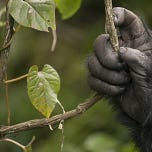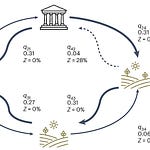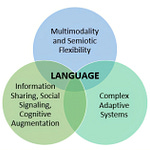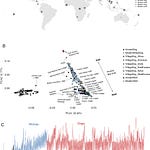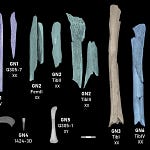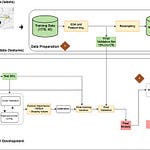The Story Our Bones Tell
Our ability to grasp a tool, peel fruit, or thread a needle may feel second nature, but these small acts carry a deep evolutionary story. Recent research published in Communications Biology1 argues that these seemingly separate features—long thumbs and large brains—did not evolve independently. Instead, they developed together, step by step, across the primate lineage.
The team analyzed data from 95 primate species, both living and extinct, including Homo sapiens, Homo neanderthalensis, and Homo naledi. The findings point to a persistent pattern: species with longer thumbs also had bigger brains.
“Our results imply a robust association between brain size and manual dexterity,” the researchers wrote. “We interpret our results to indicate sustained historical coevolution between brain size and dexterity across the primate order.”
This pairing of brain and hand appears not to be a coincidence but an enduring evolutionary relationship. As the primates’ capacity for precise manipulation increased, their brains expanded to handle the neural demands of these fine motor skills.
Thumbs, Tools, and Neural Costs
Long thumbs are more than an anatomical curiosity. They open a doorway to complex manipulative behaviors, such as using tools and crafting objects. But these behaviors come with a price: they require a brain capable of sophisticated motor planning, sensory integration, and problem-solving.
The analysis revealed that this link runs deep. Even when modern humans—the most dexterous and large-brained primates—were excluded from the dataset, the correlation held. From lemurs to chimpanzees, the trend persisted.
What surprised the team was where this neurological investment took place. They expected longer thumbs to correlate with growth in both the neocortex and the cerebellum, the latter controlling coordination and movement. Instead, the association was primarily with the neocortex, the brain’s hub for sensory processing, cognition, and decision-making.
“We therefore reveal the intriguing possibility that neural processes implicated in the evolution of manual dexterity across primates primarily involve neocortical regions,” the study notes.
This suggests that the leap from simple grasping to fine tool use was not just about better motor control. It required the cognitive sophistication to plan, anticipate, and adapt.
What It Means for Human Origins
The finding reframes a fundamental question: did brain expansion drive tool use, or did tool use fuel brain expansion? The evidence leans toward a feedback loop. As early primates became more adept at manipulating their environment, their brains had to keep up. Over time, the combined effect of these pressures produced the hands and minds that define Homo sapiens.
For archaeologists, this insight dovetails with long-standing debates about when dexterous manipulation emerged. Fossil evidence shows that early hominins already had relatively long thumbs by the time stone tools appear in the archaeological record around 3.3 million years ago. This new research suggests those changes were not isolated.
Looking Forward
The study opens new questions about the neural pathways behind dexterity. Future research may probe whether particular aspects of tool use—such as sequential planning or abstract thinking—shaped the neocortex more than others.
In the meantime, the next time a hand picks up a pen or a phone, it’s worth remembering that this simple motion is part of an ancient evolutionary partnership between hands and minds.
Further Reading & Related Research
Almécija, S., et al. (2021). “The evolution of manual dexterity in hominins and other primates.” Nature Ecology & Evolution, 5, 724–730. https://doi.org/10.1038/s41559-021-01388-5
Marzke, M. W., & Marzke, R. F. (2000). “Evolution of the human hand: approaches to acquiring, analyzing and interpreting the anatomical evidence.” Journal of Anatomy, 197(1), 121–140. https://doi.org/10.1046/j.1469-7580.2000.19710121.x
Feix, T., et al. (2015). “How humans grasp objects: Patterns for 57,000 grasps.” Proceedings of the National Academy of Sciences, 112(28), E3586–E3591. https://doi.org/10.1073/pnas.1509242112
Baker, J., Barton, R. A., & Venditti, C. (2025). “Human dexterity and brains evolved hand in hand.” Communications Biology, 8, 86. https://doi.org/10.1038/s42003-025-08686-5
Baker, J., Barton, R. A., & Venditti, C. (2025). Human dexterity and brains evolved hand in hand. Communications Biology, 8(1), 1–9. https://doi.org/10.1038/s42003-025-08686-5

